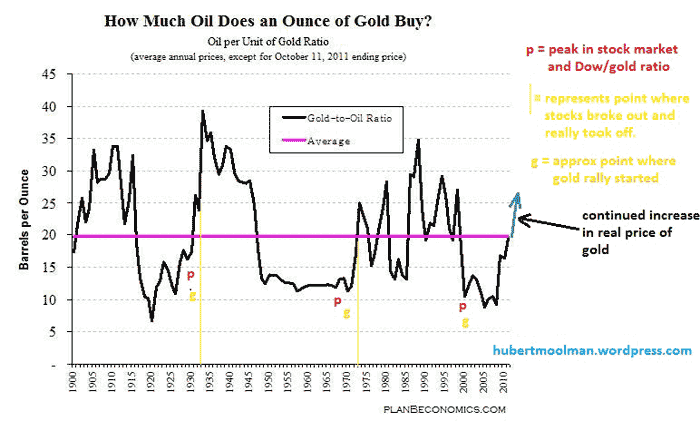Gold and Economic Decline
Post on: 8 Июнь, 2015 No Comment

Bookmark/Search this post
Reminiscent of the media’s coverage of oil in the 2000-2008 period, gold has produced a multi-year stream of thoughtless op-eds and repetitive storytelling. If readers can recall how many times the bull market in oil was dubbed over leading up to the crisis of 2008, then gold has been in a bubble for at least as many years, if not longer.
The seminal piece to this genre was Willem Buiter’s November 2009 Financial Times of London essay, Gold — A Six Thousand Year Bubble. That piece would be used as a template by other, lesser writers in the two years that followed. Consider this 2010 tracker-chart of opinion, emanating this time from New York:
By 2011, one wondered if the large, national newspapers were capable of offering something more thoughtful on gold. This autumn, we were finally treated to an intelligent, non-derivative analysis, from an unlikely source: Paul Krugman of the New York Times .
Gold and Hotelling
Paul Krugman’s partisan columns in the NYT have been a great disappointment to me in the years since he took the job. However, I encourage readers to read Krugman’s earlier work. An easy entry to Krugman’s theoretical view would be to simply watch the video of his 2008 Nobel Prize acceptance speech. His work on Trade was (and remains) brilliant. By contrast, his newspaper work as a columnist has been a constant source of frustration. Krugman has used his NYT column regularly in service to a political partisan cause, forgiving liberal figures for the same transgressions with which he has attacked conservative figures. Moreover, his advocacy of a generalized, untargeted Keynesian response to the ongoing economic crisis has become quite tedious.
But that is a subject I wish to handle in a future report. For today, I want to address Krugman’s ability to blow past most of his peers when he chooses, freely addressing just about any issue that captures his attention. His recent posts on gold and economic decline offer a clarifying portrait of our current dilemma. Also, I suspect that fewer have paid attention to these partisan-free — or as Krugman calls them, wonkish — postings, and frankly, I’m grateful to have his valuable insights.
A source of constant disagreement with regards to gold’s price behavior is whether the overall condition of inflation or deflation provides the most fertile ground for the yellow metal. By creatively using the work of Harold Hotelling, however, Krugman is able to tease out of gold’s decade-long run — and also its post-2008 run — a rather different interpretation for gold’s strength.
But first, a word on Hotelling. In an essay at The Oil Drum earlier this year, I addressed the implications that Harold Hotelling’s views had for gold and the overall environment for investment in a post-credit-bubble world. The following is from my March 2011 post, Gold, Infinite Debt, and the Problem of Capital Storage: Has the Hotelling Moment Arrived? :
The migration of capital, between the world of natural resources and the world of finance, has been addressed by any number of thinkers, one of the more compelling being Harold Hotelling. Writing in the Journal of Political Economy in 1931 , Hotelling proposed that a rational producer of resources would only be inclined to extract and sell that resource if the investment opportunities available with the capital proceed s were greater than simply leaving that resource to appreciate in the ground. So, given Hotelling’s theory of resource extraction, what has happened to gold production since the year 2000? Does the chart (the decline of gold production in the face of strong prices) reflect geological and cost limits to increasing gold production, even as the price rose from $250.00 to $1000.00 per ounce? Or, has there been some moderate yet gathering decision on the part of global gold producers to extract gold more slowly? After all, why extract gold to merely convert gold into paper currency, beyond the need to pay for the cost of production and provide, say, a dividend to shareholders? In other words, at the rate at which the price has been rising, why hurry to extract the gold?
In contrast to my take on Hotelling’s theory, in which I consider the prospect of gold from a producer’s point of view, Krugman’s recent post looked at the price of gold from an investor’s point of view. By doing so, I think Krugman is broadening Hotelling’s theory, possibly beyond Hotelling’s specific intent. But I don’t mind. I think Krugman is spot-on in his analysis. In his terrific September 6, 2011 post, Treasuries, Tips and Gold. Krugman writes:
So what determines the price of gold at any given point in time? Hotelling models say that people are willing to hold onto an exhaustible resource because they are rewarded with a rising price. Abstracting from storage costs, this says that the real price must rise at a rate equal to the real rate of interest, so you get a price path that looks like this:
Krugman probes further, after considering the drop in real interest rates:
Now ask the question, What has changed recently that should affect this equilibrium path? The answer is obvious: There has been a dramatic plunge in real interest rates, as investors have come to perceive that the Lesser Depression will depress returns on investment for a long time to come. What effect should a lower real interest rate have on the Hotelling path? The answer is that it should get flatter. Investors need less price appreciation to have an incentive to hold gold.
But if the price path is going to be flatter while still leading to consumption of the existing stock — and no more — by the time it hits the choke price, it’s going to have to start from a higher initial level. So the change in the path should look like this :














